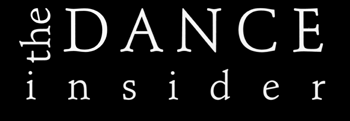|
|
the
New York manufacturer of fine dance apparel for women and girls.
Click here to see a sample of our products and a
list of web sites for purchasing.
With Body Wrappers it's always performance at its best.
|
Go back to Flash Reviews
Go Home
Flash
Review 1, 7-24: In 'Court'
A Dance Installation for an Audience of Three
By Josephine Leask
Copyright 2003 Josephine Leask
LONDON -- In its own
calm and quiet way, "Court," a duet for an audience of
three by London based choreographer Angela Woodhouse, is a dance
collaboration which challenges the status quo of dance performance.
Why? -- because it poses some fundamental questions about space,
intimacy and the audience/performer relationship, and it redefines
a refreshing dance/art aesthetic. Performed in an installation created
in collaboration with textile artist Caroline Broadhead, which consisted
of small rooms suggested by white layered muslin walls, "Court"
lasted a fleeting fifteen minutes, though it runs July 26th through
July31st. It was a liberating night out to see dance, as the venue
was the small, stylish Barrett Marsden Gallery in London, and consequently
free of the usual dance baggage and expectations. Also the night
I was there, I was joined by one other audience member so it felt
like an exclusive private view.
Woodhouse directed us
to the two different entrances which led to the center of this muslin
maze and left us like a couple of children arriving at the gate
of the secret garden to make our own way in. First I noticed the
texture of the white material which was slightly patterned and slightly
transparent with a pinkish hue. Next my eyes were drawn to small
mirror glass mosaics arranged on the floor which reflected onto
the ceiling, like stars. In the center of the maze were some pillars
and some delicate chairs made out of the same material. It was a
mini heaven of purity and beauty, a chill out zone for the jaded
dance spectator.
Walking along my corridor
to the center of the maze I met my dancer head on, while the other
member of the audience met his dancer although I could barely see
them through the walls. My dancer started moving her hand very slightly,
very slowly. Sometimes she looked at me directly. It was intense
and for a moment I panicked. "Should I move in response to her slow
gestures, should I walk away, should I stay frozen, could I touch
her, should I smile at her, am I a performer or an audience member?"
We are not used to being confronted with such intimacy in our public
lives. Was this public or private? Suddenly I didn't know what the
'rules' were any more. Issues of identity and power dissolved together
with the boundaries between audience and performer. We were all
in this together. Dance performances rarely confront us with such
subtle anarchy.
What I did know was
that the dancer was certainly picking up on my energy and my body
language. I relaxed and smiled at her then we moved on. In the middle
of the installation, both myself and the other audience member balanced
the space somewhat awkwardly with the two dancers. We both felt
rather sweaty, dirty and just off the street in this elite white
Zen den. This was their space and they fitted it as perfectly as
their own skin. Our intimacy made every action or gesture exaggerated
-- every breath, every shift of weight, every glance. While the
dancers focused intently on their duet and on each other, they were
always aware of us. As we invaded their space, we also gave them
their cues.
The choices which the
layered material walls provided were endless. You could hide, peep
through them, stand close to the other humans or totally in isolation.
There were moments when you could slip into voyeur mode and take
a step back into objectivity but not for long. Like a couple of
soothing but guiding therapists working in a spa, the white clad
dancers kept bringing you back into the here and now, involving
you in this intimate and purging experience in which time stopped
for fifteen minutes. From the beginning we as the audience were
in a state of becoming the installation as well as the performers.
It was a tactile, subtle
and cathartic work and I felt like I had entered a painting or a
landscape rather than a dance piece. It worked well as an installation,
as the dancers only moved in response to their environment and made
clear connections between the form of their duet and the content
that was gently imposed by design, action and audience interaction.
"Court" left questions unanswered; made suggestions without
closure. Such conditions are fertile for dance.
Go back to Flash Reviews
Go Home
|


